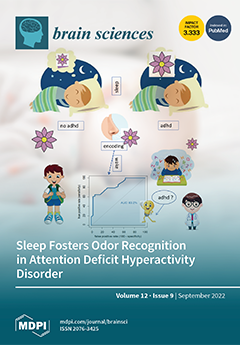Parkinson’s disease (PD) is a common age-associated neurodegenerative motor disorder, which is mainly caused by dopaminergic neuron loss in the substantia nigra. This study aimed to evaluate the function and the underlying molecular mechanism of itaconate in PD. PD models were established in
[...] Read more.
Parkinson’s disease (PD) is a common age-associated neurodegenerative motor disorder, which is mainly caused by dopaminergic neuron loss in the substantia nigra. This study aimed to evaluate the function and the underlying molecular mechanism of itaconate in PD. PD models were established in vivo and in vitro using 1-methyl-4-phenyl-1,2,3,6-tetrahydropyridine (MPTP) and 1-methyl-4-phenylpyridinium (MPP
+), respectively. Pole and rotarod tests were applied to evaluate the motor coordination of mice. The expression of tyrosine hydroxylase (TH) in MPTP-induced mice and the MPP
+ revulsive PD cell model were detected using Western blotting and immunofluorescence. The inflammatory factors level was detected by quantitative real-time polymerase chain reaction. The content of superoxide dismutase (SOD), malondialdehyde (MDA), glutathione (GSH), and reactive oxygen species (ROS) in substantia nigra, striatum, and SH-SY5Y cells were analyzed. Moreover, the apoptosis of MPP
+ revulsive SH-SY5Y cells was determined using terminal deoxynucleotidyl transferase-mediated dUTP-biotin nick-end labeling (TUNEL) staining and flow cytometry. The expression of apoptosis- and Nod-like receptor family protein 3 (NLRP3) inflammasome-associated proteins was measured using Western blotting and immunofluorescence. Itaconate attenuated motor deficits of MPTP-induced PD mice. Itaconate inhibited dopamine neuronal damage, inflammatory response, oxidative stress, and neuronal apoptosis in MPTP-caused PD mice and the MPP
+ revulsive PD cell model. Additionally, itaconate notably repressed the activation of NLRP3 inflammasome. This research demonstrated that itaconate could attenuate neuroinflammation and exert dopamine neuroprotection in PD through inhibiting NLRP3 inflammasome.
Full article






